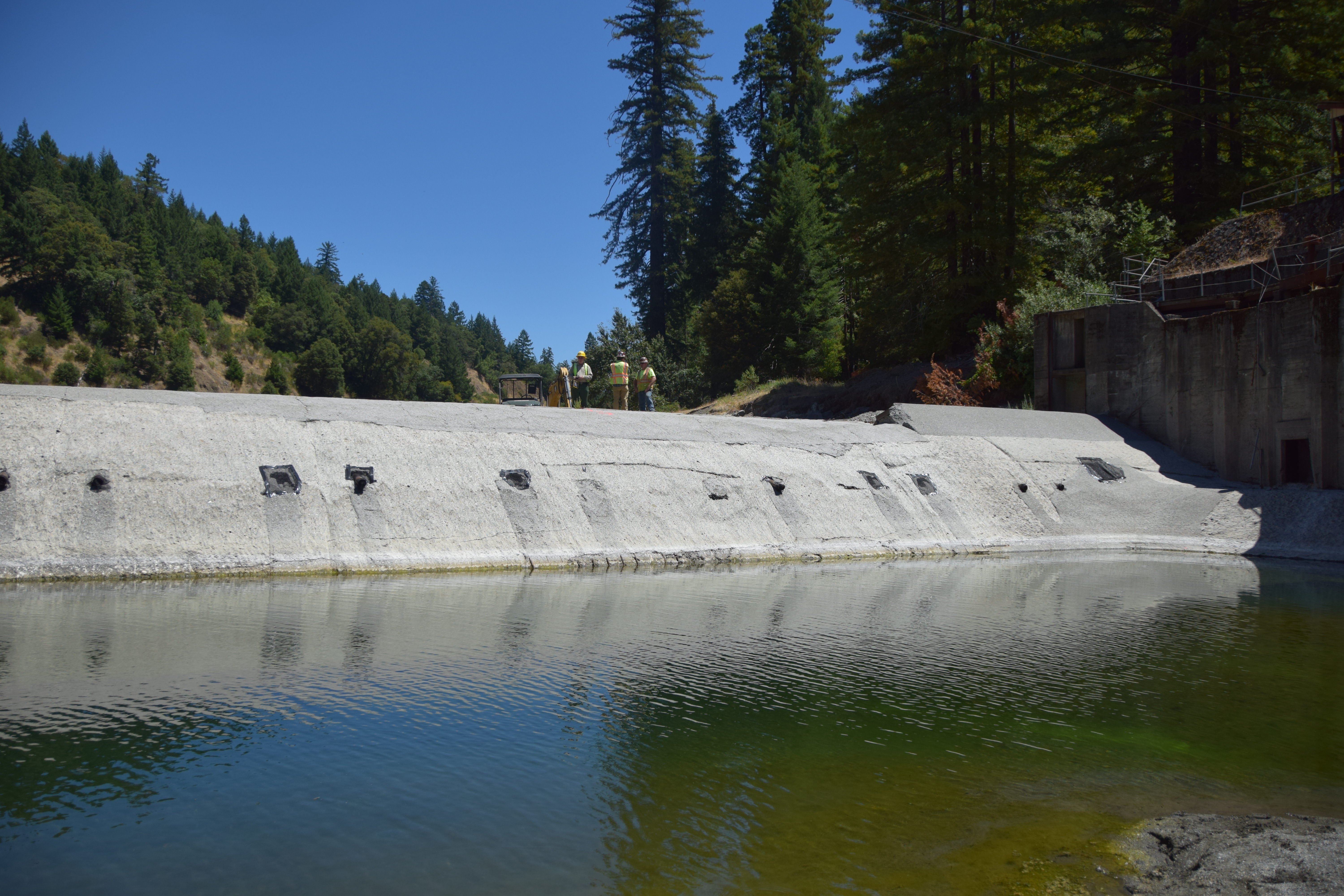
The second largest dam removal in California will eliminate a winter velocity barrier through a narrow fish passage slot in the dam (higher winter flows focus all flow through the slot for a distance of about 60 feet parallel to the thalweg). Coho salmon, Chinook salmon, steelhead/rainbow trout, and Pacific lamprey would benefit from the project, and 100 miles of stream will be opened as a result of the project. Permanent interpretive panels will be placed in the park that discusses the fishery and reasons for removing the dam. A video will be developed and presented in the parks and used for other interpretive opportunities.
The second largest dam removal in California will eliminate a winter velocity barrier through a narrow fish passage slot in the dam (higher winter flows focus all flow through the slot for a distance of about 60 feet parallel to the thalweg). Coho salmon, Chinook salmon, steelhead/rainbow trout, and Pacific lamprey would benefit from the project, and 100 miles of stream will be opened as a result of the project. Permanent interpretive panels will be placed in the park that discusses the fishery and reasons for removing the dam. A video will be developed and presented in the parks and used for other interpretive opportunities.
Human Interest/Community Benefit: Press releases to the local newspapers have been issued approximately every other month regarding project progress during demolition; public meetings have received both television and press coverage; neighbors have received certified mailings about project progress; presentation and field trip at the Eel River Forum (a group interested in restoration of the Eel); two public meetings regarding environmental review and design; meetings by the sector superintendent with the Garberville Chamber of Commerce; we have a request for Bay Area television coverage under review; an interpretive panel has been prepared for placement in the park upon completion of demolition; volunteers (Eel River Recovery Project, Americorps) have assisted with fooothill yellow legged frog relocation and sensitive plant transplanting.
Project Timeline:
2009 to 2012- Dam removal feasibility studies and design completed by California Parks & Recreation Department, NOAA and American Rivers ($75,000)
September 2014- Final permitting and construction funding awarded by NOAA Fisheries Restoration Center ($2.43 million).
September 2013 to June 2016 – Completed SHPO review of historical study, NEPA, CEQA, and all other needed permitting (County, Air Quality, CDFW, RWQCB, USACOE, NPS, Department of Water Resources - Division of Dam Safety) and engineering studies, pre-project environmental studies, including yellow-legged frog research level study
Spring 2015 – Initiated riparian vegetation propagation
November 2015 to May 2016 – Performed contracting for dam removal, engineering oversight, and planting; spot environmental surveys (foothill yellow-legged frogs, northern spotted owls)
June 2016 to October 2016 – Implemented dam removal and erosion control; final demolition delayed by high flows with approximately 80% of concrete demolition completed
Fall 2016 – Initial vegetation planting
Spring 2017 – Develop cross sections to observe channel changes from 2016 demolition; spot environmental surveys
Summer 2017 – Complete demolition – the estimated time frame for demolition completion is about 1.5 months – this can be accomplished to avoid both high spring flows that could persist into late June and early flows that have occurred in mid-October (c.f. 2016) - the estimated duration also allows avoidance for fledging of nearby eagles (the latest estimated fledging is early July) or nesting for Northern Spotted Owls (July 10 is end of nesting season) if nesting is encountered (none to date in 4 years of monitoring). US Fish and Wildlife Service have determined that marbled murrelets are unlikely to occupy nearby old growth due to the distance from the coast. No other factors are anticipated that could delay the project.
Fall –Winter 2017 – Complete vegetation planting
Spring 2018 – Develop long profile and cross sections to review channel response; collect yellow-legged frog and vegetation success and other survey data, including fisheries data from CDFW – vegetation will be monitored for 3 years from initial planting per permit and will extend beyond this date. Collate data and submit a final report to grantors.
Partners: NOAA Fisheries, California Parks & Recreation Department, California Conservation Corps, American Rivers, California Fish Passage Forum
